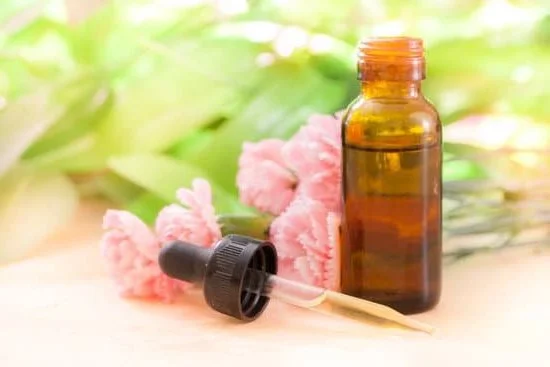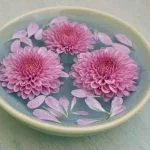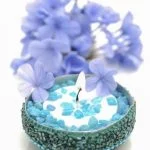Are you interested in learning how to make natural aromatherapy oils? Aromatherapy oils, also known as essential oils, have been used for centuries for their therapeutic and medicinal properties. In this article, we will explore the process of making natural aromatherapy oils, including selecting the right essential oils, understanding carrier oils, methods of extraction, DIY recipes, safety precautions and guidelines, storage and preservation, and using the oils effectively.
Aromatherapy oils are highly concentrated plant extracts that can be used for their healing and aromatic properties. They are commonly used in aromatherapy practices to promote relaxation, reduce stress, improve sleep quality, and alleviate various physical and emotional ailments. Understanding the benefits of using natural aromatherapy oils can help individuals incorporate them into their daily wellness routines.
The history of aromatherapy dates back thousands of years ago across various cultures around the world. From ancient Egypt to traditional Chinese medicine and Ayurveda in India, the use of aromatic plant extracts has been a prominent practice for promoting health and well-being. The popularity of natural aromatherapy oils continues to grow as more people seek alternative remedies for common ailments. Stay tuned as we delve into the fascinating world of creating your own natural aromatherapy oils at home.
Selecting the Right Essential Oils
When it comes to making natural aromatherapy oils, understanding the different types of essential oils is crucial. There are hundreds of essential oils available, each with its own unique properties and benefits. From calming lavender to invigorating peppermint, the options can be overwhelming. It’s important to research and familiarize yourself with the different types of essential oils and their effects before deciding which ones to use in your aromatherapy blends.
Factors to Consider When Choosing Essential Oils for Aromatherapy
As you select the right essential oils for your aromatherapy blends, there are several factors to consider. Firstly, think about the purpose of your aromatherapy oil – whether it is for relaxation, energy boost, or alleviating a specific ailment. This will help guide you in choosing the appropriate essential oils for your needs. Additionally, consider the scent and personal preference as some essential oils may have strong or sharp fragrances that may not be pleasing or suitable for everyone.
In addition to selecting the right essential oils, it is important to understand the role of carrier oils in aromatherapy. Carrier oils are used to dilute essential oils before applying them to the skin. They play a crucial role in ensuring that essential oils are safe for topical use and also provide additional therapeutic benefits on their own.
Some popular carrier oil options include almond oil, coconut oil, jojoba oil, and avocado oil. By understanding carrier oils and how they work alongside essential oils, you can create safe and effective natural aromatherapy oil blends.
Understanding Carrier Oils
When creating natural aromatherapy oils, carrier oils play a crucial role in diluting and enhancing the effectiveness of essential oils. Carrier oils are vegetable-based oils that have been derived from the fatty portion of a plant, usually the seeds, kernels, or nuts. Here are some popular carrier oils used in making natural aromatherapy oils:
- Sweet Almond Oil: Known for its mild aroma and moisturizing properties, sweet almond oil is a popular choice for blending with essential oils in aromatherapy. It is easily absorbed by the skin and can be used for massage blends or as a base for homemade aroma blends.
- Jojoba Oil: With its long shelf life and similarity to the skin’s natural oils, jojoba oil is often used as a carrier oil in aromatherapy. It is suitable for all skin types and can be mixed with essential oils to create facial serums, body lotions, and hair treatments.
- Coconut Oil: This versatile oil has antibacterial and antifungal properties, making it an excellent carrier oil for aromatherapy blends. Coconut oil solidifies at cooler temperatures but liquifies when warmed, making it easy to work with when creating natural aromatherapy products.
Understanding how carrier oils interact with essential oils is crucial in creating well-balanced and effective natural aromatherapy products. The ratio of carrier oil to essential oil will depend on the intended use of the final product – whether it is for topical application, diffusion, or inhalation. By carefully selecting and understanding carrier oils, one can create personalized and effective natural aromatherapy remedies at home.
Methods of Extracting Essential Oils
Essential oils are the foundation of aromatherapy, and extracting them from plants is a crucial step in creating natural aromatherapy oils. There are several methods for extracting essential oils, each with its own unique process and characteristics. Here are the three main methods used for extracting essential oils:
- Distillation Process: This method involves using steam to extract the essential oil from the plant material. The steam carries the aromatic compounds through a cooling system, where they condense into a liquid that separates from the water. This is the most common method of extracting essential oils and is often used for flowers and delicate plant parts.
- Cold-Press Extraction Method: Cold-press extraction is typically used for citrus fruits and involves pressing the rind or peel to release the essential oil. The pressure breaks open the oil glands in the plant material, allowing the oil to be collected. This method is known for yielding high-quality citrus essential oils.
- Solvent extraction Method: In this method, a solvent such as hexane is used to dissolve the aromatic compounds in the plant material. The resulting mixture is then filtered, and the solvent is evaporated, leaving behind a concentrated essential oil. While this method can yield a large quantity of essential oil, it may also leave trace amounts of solvent in the final product.
Learning how to make natural aromatherapy oils involves understanding these different extraction methods and choosing which one best suits your needs and resources. Each method has its advantages and considerations, so it’s important to research and understand them thoroughly before proceeding with creating your own natural aromatherapy oils. With knowledge of these methods, you can confidently begin your journey into making natural aromatherapy oils at home.
Overall, understanding these methods provides valuable insight into how to create pure and high-quality natural aromatherapy oils that can be used for various purposes such as relaxation, energy enhancement, or even skincare. As you delve into exploring the art of making your own natural aromatherapy oils, familiarize yourself with each method’s intricacies to ensure that you produce safe and effective products that offer all the benefits associated with aromatherapy.
DIY Natural Aromatherapy Oil Recipes
Making your own natural aromatherapy oils can be a fun and rewarding process. Not only do you have the opportunity to create custom blends that cater to your specific needs, but you also have full control over the quality of the ingredients used. In this section, we will explore how to make natural aromatherapy oils at home, including some DIY recipes to get you started.
To begin, it’s important to select high-quality essential oils for your homemade aromatherapy blends. When choosing essential oils for your recipes, consider factors such as their therapeutic properties, scent profile, and the intended purpose of the blend. Whether you’re aiming for relaxation, energy-boosting effects, or relief from certain ailments, understanding the different types of essential oils and their benefits is crucial in creating effective aromatherapy blends.
Next, let’s take a closer look at one recipe: Relaxing Lavender Oil. To make this soothing blend, start by combining 10-12 drops of lavender essential oil with 1 ounce of a carrier oil such as jojoba or sweet almond oil. Mix thoroughly and transfer the mixture into a dark glass bottle for storage. This blend can be applied topically for a calming effect or added to an aromatherapy diffuser to fill the air with its tranquil scent.
Another popular recipe is an Energizing Citrus Blend. This invigorating combination typically includes citrus essential oils like lemon, orange, or grapefruit mixed with a carrier oil. Use approximately 8-10 drops of citrus essential oil per ounce of carrier oil and adjust according to your preference. This uplifting blend is perfect for energizing massages or as a stimulating aroma in a room diffuser.
Lastly, consider making Soothing Peppermint Oil using peppermint essential oil and a carrier oil of your choice. With its refreshing minty aroma and cooling sensation, this blend can provide relief from headaches and muscle tension when applied topically or inhaled through steam inhalation methods.
By following these recipes and experimenting with various essential oil combinations, you can personalize your own natural aromatherapy oils for different purposes and enjoy the therapeutic benefits they offer.
So why not give it a try? Making your own natural aromatherapy oils allows you to take control of what goes into your blends and tailor them to suit your preferences.
Safety Precautions and Guidelines
When making natural aromatherapy oils at home, it is essential to take proper safety precautions to ensure the well-being of yourself and those around you. Dilution ratios for essential oils must be carefully followed to avoid skin irritation or adverse reactions.
A general rule of thumb is to dilute essential oils with a carrier oil at a ratio of 2-3%, meaning 12 drops of essential oil per ounce of carrier oil. This ensures that the potency of the essential oil is reduced and safe for topical application.
It is also crucial to be aware of any allergies or sensitivities that you or others may have to specific essential oils. For example, some individuals may have a strong reaction to tea tree oil, while others may experience sensitivity to citrus oils. Always perform a patch test on a small area of skin before using a new essential oil, especially if you have known sensitivities.
Lastly, it’s important to keep natural aromatherapy oils out of reach of children and pets. While aromatherapy can provide numerous benefits, ingestion or improper use of certain essential oils can be harmful or toxic. Store your homemade oils in child-resistant bottles and in a location that is inaccessible to curious little hands and paws.
| Safety Precautions | Guidelines |
|---|---|
| Dilution Ratios | Follow a dilution ratio of 2-3% for safe topical application |
| Allergies and Sensitivities | Perform patch tests and be aware of potential reactions |
| Storage Safety | Keep aromatherapy oils out of reach of children and pets |
Storage and Preservation of Aromatherapy Oils
When it comes to making natural aromatherapy oils, it’s important to pay attention to their storage and preservation in order to maintain their quality and effectiveness. Proper storage containers play a crucial role in preserving the aroma and therapeutic properties of the oils.
The shelf life of natural aromatherapy oils also depends on various factors, such as the type of oil and how it’s stored. In this section, we will explore the best practices for storing and preserving your homemade aromatherapy oils.
Proper Storage Containers for Aromatherapy Oils
Choosing the right storage containers for your natural aromatherapy oils is essential to prevent deterioration and preserve their aromatic qualities. Dark glass bottles such as amber or cobalt blue are commonly used to store essential oils because they provide protection from light exposure, which can cause oxidation and degradation of the oils. Additionally, tight-sealing caps or dropper tops help minimize air exposure, further preserving the quality of the oils.
Shelf Life of Natural Aromatherapy Oils
The shelf life of natural aromatherapy oils varies depending on several factors including the type of oil, method of extraction, and storage conditions. For example, citrus essential oils typically have a shorter shelf life due to their high volatility, while more stable oils like sandalwood or patchouli can last longer. It’s important to label your storage containers with the date of creation and keep track of the recommended shelf life for each oil.
Tips for Preserving the Quality of the Oils
To ensure that your homemade aromatherapy oils remain potent and effective, consider storing them in a cool, dark place away from direct sunlight or heat sources. This helps prevent oxidation and evaporation of the volatile compounds in the essential oils.
Additionally, always keep the lids tightly closed when not in use and avoid exposing the oils to air for extended periods. By following these tips for proper storage and preservation, you can maximize the longevity and benefits of your natural aromatherapy oils.
By understanding how to properly store and preserve your homemade natural aromatherapy oils, you can extend their shelf life and maintain their therapeutic properties. Whether you’re creating a single oil blend or multiple variations for different purposes, implementing these best practices will ensure that you get the most out of your aromatic creations.
Using Natural Aromatherapy Oils
Making your own natural aromatherapy oils can be a fun and rewarding process. By creating your own blends, you can customize the scents to suit your specific needs and preferences. So, how to make natural aromatherapy oils? There are several methods of extraction you can use to create your own essential oils at home, allowing you to fully experience the benefits of using natural aromatherapy oils.
One method of extracting essential oils is through the distillation process. This involves heating water and placing plant materials in a still, allowing the steam to pass through the plant material and then condense into a liquid form. This liquid is then collected as the essential oil.
Another method is cold-press extraction, commonly used for citrus fruits. This process involves simply pressing or grinding the fruit rinds to extract the oil without using heat.
For those interested in making floral or delicate plant-based essential oils, solvent extraction may be used. In this method, a solvent such as ethanol or hexane is used to extract the oil from the plant material.
Once you have created your natural aromatherapy oils, it’s important to consider how you will use them. Different methods include using an aromatherapy diffuser, creating massage oils, or simply inhaling the aroma directly from the bottle. It’s essential to follow proper dilution ratios for safe usage and be mindful of any allergies or sensitivities among users. With these guidelines in mind, you can enjoy all the benefits that natural aromatherapy oils have to offer.
| Extraction Method | Description |
|---|---|
| Distillation Process | Involves heating water and placing plant materials in a still allowing steam to pass through and condense into a liquid form. |
| Cold-press Extraction | Commonly used for citrus fruits by pressing or grinding fruit rinds without using heat. |
| Solvent Extraction | Uses solvents like ethanol or hexane to extract oil from delicate plant material. |
Conclusion
In conclusion, natural aromatherapy oils offer a wide range of benefits for both physical and mental well-being. With the right essential oils and carrier oils, individuals can create their own personalized blends to suit their needs. Understanding the extraction methods and safety precautions is crucial in ensuring the quality and efficacy of the oils. By following the provided DIY recipes and storage guidelines, anyone can easily make their own natural aromatherapy oils at home.
It is important to consider that when making natural aromatherapy oils, individuals should always prioritize safety and be mindful of potential allergies or sensitivities. Dilution ratios should be followed closely, and essential oils should be kept away from children and pets. Additionally, proper storage in dark glass containers will help preserve the shelf life and quality of the oils.
Ultimately, making natural aromatherapy oils can be a rewarding and empowering experience. By experimenting with different scents and blends, individuals can find what works best for them on their wellness journey. Whether it’s creating a relaxing lavender oil for bedtime or an energizing citrus blend for a morning pick-me-up, learning how to make natural aromatherapy oils opens up endless possibilities for enhancing daily self-care rituals.
Frequently Asked Questions
How Do You Make Aromatherapy Oil at Home?
Making aromatherapy oil at home involves combining essential oils with a carrier oil, such as almond or coconut oil. The ratio of essential oils to carrier oil will depend on personal preference and the intended use of the aromatherapy oil.
What Ingredients Do You Need to Make Essential Oils?
The ingredients needed to make essential oils include plant materials, such as flowers, leaves, bark, or roots, and a method for extracting the essential oils from the plant material. Different plants require different extraction methods, such as steam distillation or cold pressing.
How Are Aromatherapy Oils Made?
Aromatherapy oils are made through a process of extracting the essential oils from plant materials. This can be done using methods such as steam distillation, cold pressing, or solvent extraction. Once extracted, the essential oils are typically combined with a carrier oil to create an aromatherapy oil blend for use in diffusers or massage.

Are you looking for a natural way to improve your health and wellbeing?
If so, aromatherapy may be the answer for you.





